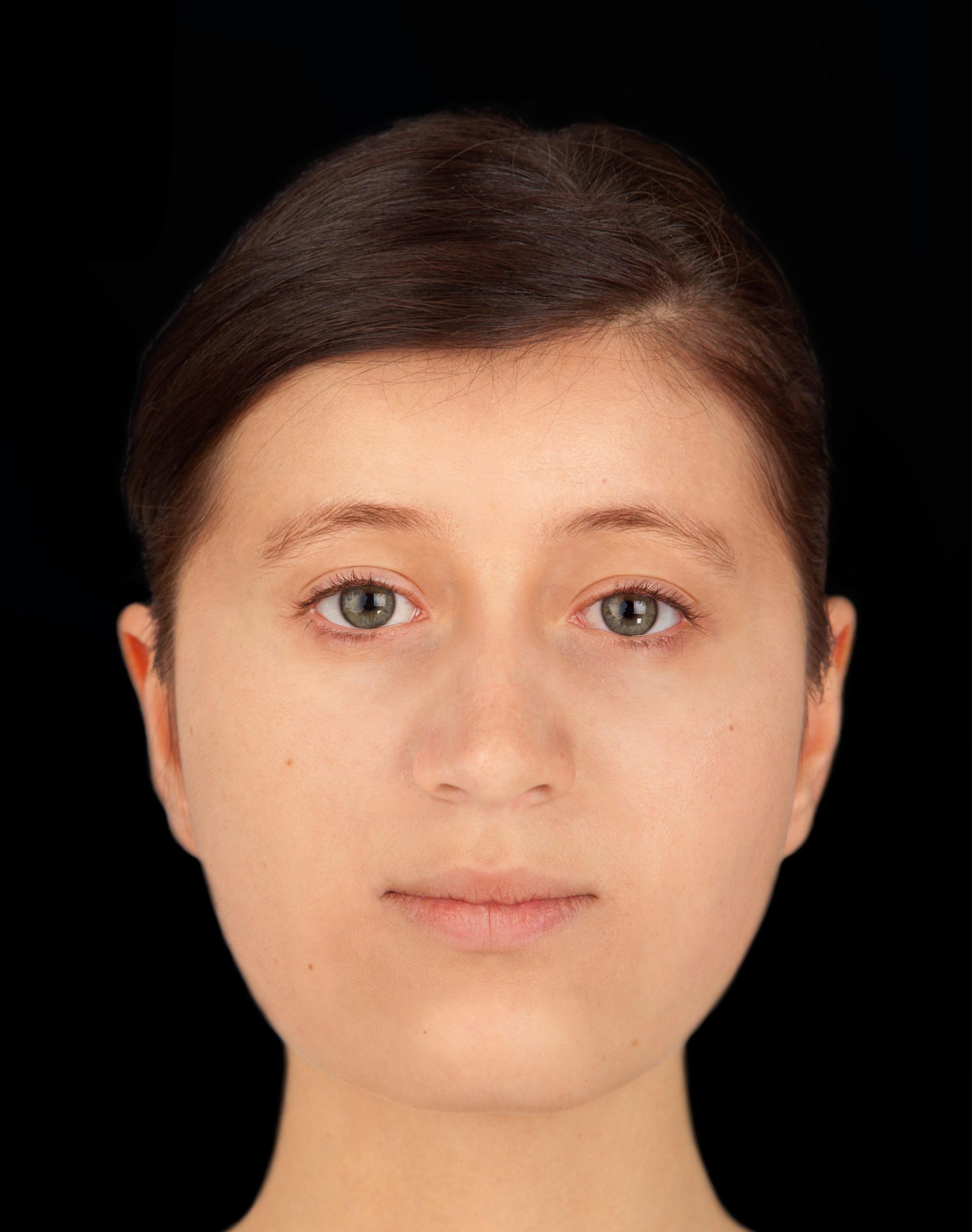

Крест Трампингтона был найден во время раскопок в 2012 году. Предоставлено: Археологический отдел Кембриджского университета.
Лицо 16-летней женщины, похороненной недалеко от Кембриджа (Великобритания) в 7 веке, было реконструировано с использованием уникального золота и граната («Крест Трампингтона») после анализа ее черепа.
Это публично привлекательное представление недавно было раскрыто с новыми научными данными, показывающими, что она переехала в Центральную Европу в Англию, когда была молодой девушкой. Этот переход привел к чудесной трансформации ее пищевых привычек.
Фотография и артефакты из захоронения таинственной женщины, обнаруженные в 2012 году Кембриджским археологическим отделом в Трампингтон-Медоуз на южной границе Кембриджа, включая ее знаменитое распятие, будут представлены на новой крупной выставке в Кембриджском музее археологии и антропологии (MAA). Под нашими ногами: археология Кембриджа пройдет с 21 июня по 14 апреля 2024 года.
Судебно-медицинский эксперт Хью Моррисон создал подобие, используя измерения черепа женщины и данные о глубине тканей для женщин европеоидной расы. без[{» attribute=»»>DNA analysis, Morrison could not be sure of her precise eye and hair color, but the image offers a strong indication of her appearance shortly before she died.

The Trumpington Cross. Credit: University of Cambridge Archaeological Unit
Hew Morrison said: “It was interesting to see her face developing. Her left eye was slightly lower, about half a centimeter, than her right eye. This would have been quite noticeable in life.”
New “you are what you eat” isotopic analysis of the young woman’s bones and teeth conducted by bioarchaeologists Dr. Sam Leggett and Dr. Alice Rose, and archaeologist Dr. Emma Brownlee, during Ph.D. research at the University of Cambridge also reveals that she moved to England from somewhere near the Alps, perhaps southern Germany, sometime after she turned 7 years old.
Leggett and Rose also found that once the girl had arrived in England, the proportion of protein in her diet decreased by a small but significant amount. This change occurred close to the end of her young life, showing that the period between her migration and burial near Cambridge was tragically short

Trumpington Cross burial facial reconstruction created by forensic artist Hew Morrison using measurements of the woman’s skull and tissue depth data for Caucasian females. Credit: Hew Morrison ©2023
Dr. Leggett, now at the University of Edinburgh, said: “She was quite a young girl when she moved, likely from part of southern Germany, close to the Alps, to a very flat part of England. She was probably quite unwell and she traveled a long way to somewhere completely unfamiliar – even the food was different. It must have been scary.”
Previous analysis indicated that the young woman had suffered from illness but her cause of death remains unknown. She was buried in a remarkable way – lying on a carved wooden bed wearing the cross, gold pins (also on display), and fine clothing.
Hers is one of only 18 bed burials ever uncovered in the UK. Her ornate cross, combining gold and garnets (third quarter of the 7th century), is one of only five of its kind ever found in Britain and identifies her as one of England’s earliest converts to Christianity and as a member of the aristocracy if not royalty. The best-known example of such a cross was found in the coffin of St Cuthbert.
In 597 AD, the pope dispatched St Augustine to England on a mission to convert the pagan Anglo-Saxon kings, a process that continued for many decades.
Dr Leggett said: “She must have known that she was important and she had to carry that on her shoulders. Her isotopic results match those of two other women who were similarly buried on beds in this period in Cambridgeshire.
“So it seems that she was part of an elite group of women who probably traveled from mainland Europe, most likely Germany, in the 7th century, but they remain a bit of a mystery. Were they political brides or perhaps brides of Christ? The fact that her diet changed once she arrived in England suggests that her lifestyle may have changed quite significantly.”
Dr. Sam Lucy, a specialist in Anglo-Saxon burial from Newnham College, Cambridge, who published the Anglo-Saxon excavations at Trumpington, said:
“These are intriguing findings, and it is wonderful to see this collaborative research adding to our knowledge of this period. Combining the new isotopic results with Emma Brownlee’s research into European bed burials really does seem to suggest the movement of a small group of young elite women from a mountainous area in continental Europe to the Cambridge region in the third quarter of the seventh century.
“Southern Germany is a distinct possibility owing to the bed burial tradition known there. Given the increasingly certain association between bed burial, such cross-shaped jewelry, and early Anglo-Saxon Christianity, it is possible that their movement related to pan-European networks of elite women who were heavily involved in the early Church.”
Dr. Jody Joy, the exhibition’s co-curator, said: “The story of this young woman goes to the very heart of what our exhibition is all about – new research making visible the lives of people at pivotal moments of Cambridgeshire’s history. MAA holds one of Britain’s most important collections of Early Medieval archaeology and the Trumpington bed burial is so important. It looks like it still has much more to teach us.”
Meeting: ‘Beneath Our Feet’ exhibition
In the exhibition, the ‘Trumpington Cross’ will be displayed together with the delicate gold and garnet pins connected by a gold chain, which were found near the teenager’s neck. These pins probably secured a long veil to an outer garment of fine linen. The pins would have caught the light as she moved. The burial bed’s decorative headboard will also be exhibited.

«Интроверт. Мыслитель. Решатель проблем. Злой специалист по пиву. Склонен к приступам апатии. Эксперт по социальным сетям».





More Stories
Астронавт НАСА публикует фотографию Луны над Тихим океаном: «Удивительно»
Компенсация сна по выходным может снизить риск сердечно-сосудистых заболеваний на пятую часть — исследование | Сердечное заболевание
Согласно окаменелостям, доисторическую морскую корову съели крокодил и акула